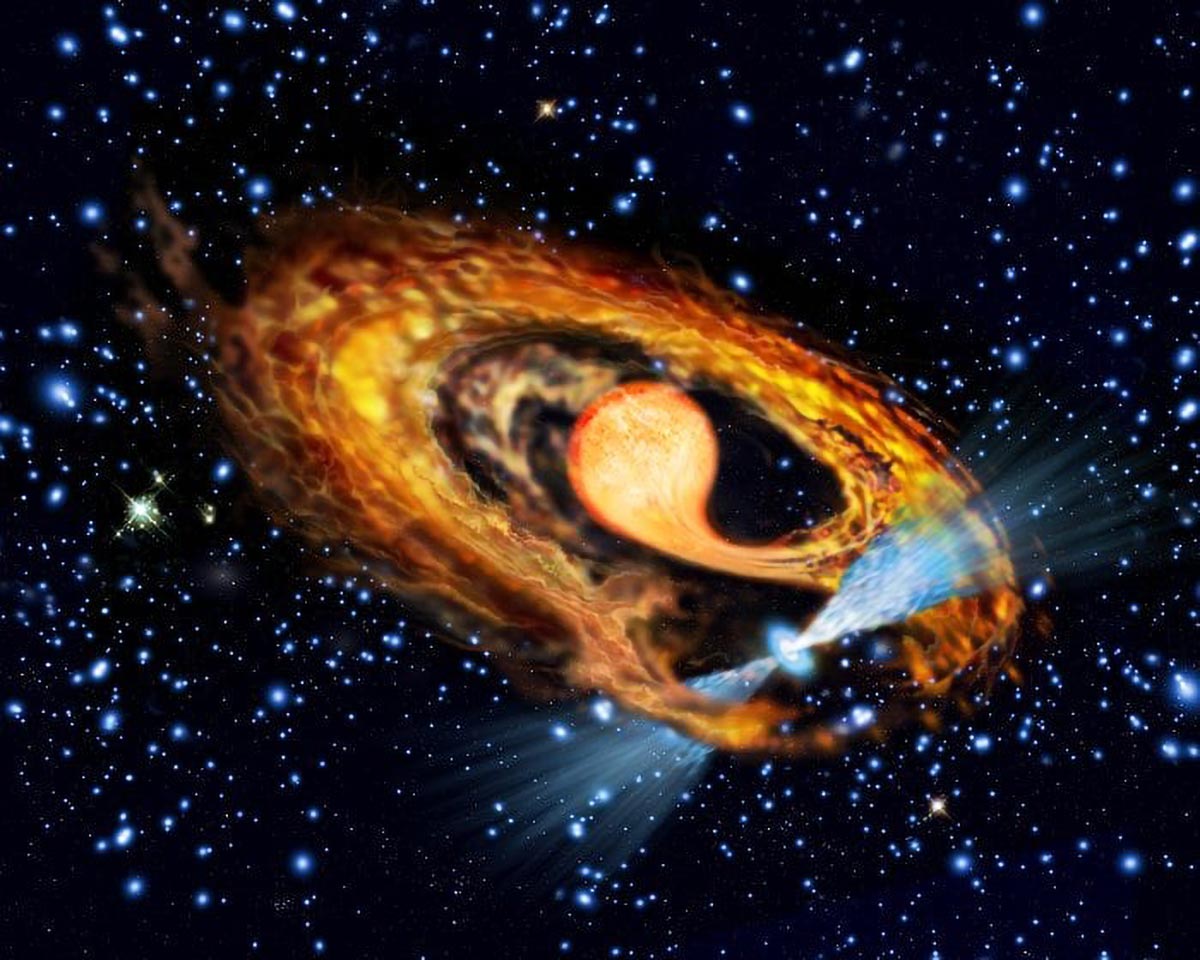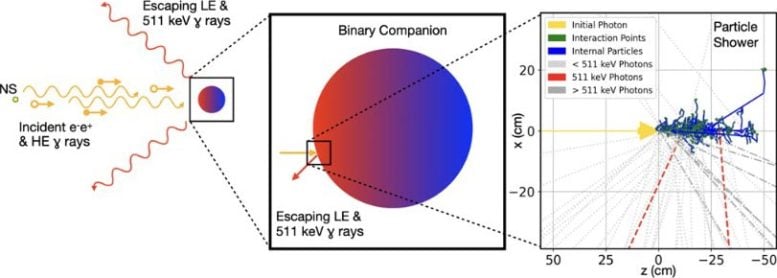Astrophysicists Zero In on Source of Strange Gamma-Ray Signals

Millisecond pulsar binaries may produce the excess 511 keV photons seen in the galaxy. These systems could expose hidden pulsars and even exoplanets.
Many astrophysicists devote their work to tracing the origins of photons, since certain types are closely linked to specific cosmic processes. Identifying where these photons come from could help resolve major questions in astrophysics. One particularly intriguing case involves photons on the “511 keV line,” which appear in unusually high numbers near the galactic core.
No single known source produces them in sufficient abundance. A recent study by Zachary Metzler and Zorawar Wadiasingh, from the University of Maryland and NASA’s Goddard Space Flight Center, proposes that millisecond pulsar (MSP) binaries may be a significant contributor.
The significance of 511 keV photons
Why are 511 keV photons so important? The name refers to their energy level, 511 kiloelectronvolts, which corresponds to a wavelength of 2.427 picometers—placing them firmly in the gamma-ray portion of the electromagnetic spectrum. What makes them special is that they are produced through what is known as the “annihilation line.”
Despite the ominous sound, “annihilation” here describes the collision of a positron and an electron. When these oppositely charged particles meet, they are converted into energy in the form of 511 keV photons. If researchers can determine what is generating the excess of these photons near the galactic center, they will also uncover a plentiful source of electron-positron annihilation.
Possible astrophysical sources
Many possible origins for 511 keV photons have been suggested, including binary jet X-ray systems and even dark matter annihilation. However, Drs. Metzler and Wadiasingh argue that a particular type of binary pulsar could play a major role. These systems, known as millisecond pulsar (MSP) binaries, contain a pulsar that spins once every few milliseconds. Such pulsars are already remarkable because of the extreme physical forces involved, but when paired with a companion star—which does not necessarily need to be a pulsar—the interactions become even more complex and intriguing.

In their study, the authors modeled several configurations of MSP binaries. Their results revealed distinctive features that they suggest are worth investigating with next-generation gamma-ray telescopes and gravitational wave detectors, since combining both observational methods would provide the clearest picture of MSP binaries. They highlight three specific avenues of discovery as particularly promising.
Clues to exoplanets and star composition
First, the authors believe details about any accompanying exoplanets could be discovered by analyzing the output of an MSP binary. The 511 keV signal can fluctuate based on the system’s orbital dynamics, creating red/blue shifts as the stars move around each other, and possibly around a possible exoplanet. Additionally, astronomers can learn about the composition of the companion star in the system by analyzing changes in the “production efficiencies” of 511 keV photons, which vary with the types of material present in the companion star. Those orbital dynamics and material composition information could reveal potential exoplanets being harbored in the system.
A second potential avenue for research is the search for “ultra-compact systems,” where the MSP and its companion star are in very close proximity. These are normally skipped over in pulsar surveys, as the algorithms used to search through astronomical data can’t analyze the interactions between the two stars to differentiate them, essentially making this a partial blind spot in the astronomical literature.
However, ultra-compact systems with MSPs would create massive 511 keV lines, since the pulsar’s beam would pass over the outer atmosphere of its companion star frequently, covering a lot of area. That leaves a lot of room for electron/positron annihilation, and therefore a lot of 511 keV photons, which should be noticeably stronger in these binary configurations.
Revealing hidden pulsars
A pulsar’s beam also leads to the third discovery of pulsars themselves, whose beam doesn’t pass over Earth. Typically, pulsars are discovered because their “beam” of energy passes directly over the Earth, and our detectors manage to pick up whatever energy that beam was sending, no matter how far away it is. However, astrophysicists hypothesize that there are plenty of pulsars whose beams don’t pass over us at all; therefore, we wouldn’t be able to collect any data on them.
MSP binaries, though, would allow us to see pulsars from a new angle – from the 511 keV photons created when their beam hits their companion star. Those photons are not nearly as directional as the pulsar beam itself, so even if the beam doesn’t directly point towards Earth, at least some of the 511 keV photons from annihilation of electrons in the star’s upper atmosphere will – allowing us to tangentially identify that a pulsar is hitting the star with it’s high-powered beam.
As the authors discuss in the paper, their work is just theoretical at this point, with some modeling to go along with it. Another generation of detection instruments is coming online in the next few years, including the Compton Spectrometer and Imager (COSI), expected to launch in 2027. With the additional observational power of these platforms, astronomers should be able to gather enough data to test this theory and should be able to track down even more of these interesting photons, no matter their source.
Reference: “Irradiated Pulsar Planets and Companions as 511 keV Positron Annihilation Line Sources” by Zachary Metzler and Zorawar Wadiasingh, 3 September 2025, arXiv.
DOI: 10.48550/arXiv.2503.10511
Adapted from an article originally published on Universe Today.
Never miss a breakthrough: Join the SciTechDaily newsletter.
Source link

